A Weekend Trip to Tayetos
text and photos by Vina Michaelidis
For an article describing the trip illustrated by these newsandviews/photos, see The Mediterranean Garden No. 38, October 2004, under Branch News, greek Branch, A Weekend Trip to Taygetos by Davina Michaelides.
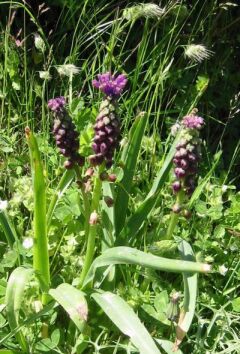
Muscari comosum – common in the wild and as a
garden plant,
the bulbs are edible and can be found in
some greek vegetable markets.
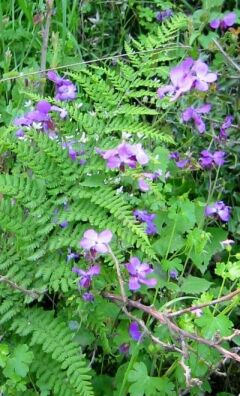
Malcomia maritima growing through a fern. Despite its name,
this little annual
grows well up into the mountains and will also
self-seed in most gardens from an initial sowing of bought seed.

Phlomis fruticosa - although the flower is over, the handsome
leaves of this
phlomis keep it attractive as it goes to seed.
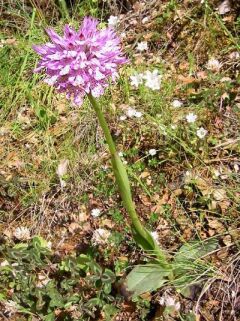
Ochis tridentata – the distinctive mop head of the 'three-toothed'
orchid
make it one of the more easy to identify in this difficult genus.
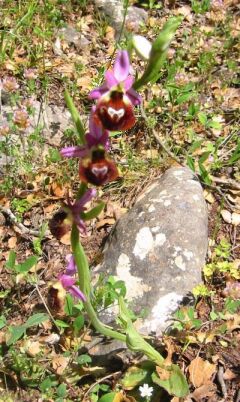
A Bee Orchid, possibly Ophrys argolica. The little orphrys'
are very
common but always exciting to find.
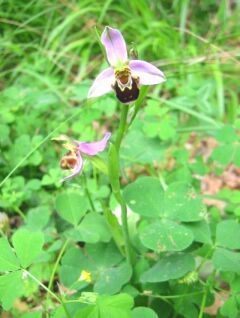
Another Bee Orchid, probably Ophrys apifera.
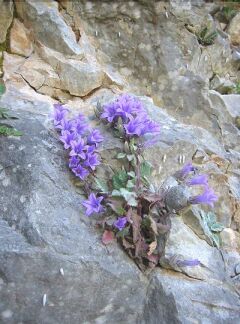
Rock campanula, once again hard to identify because
there are six very similar species but Campanula
andrewsii is found in the Peloponnese. In some places
the bare rock was alive with the vibrant colour.
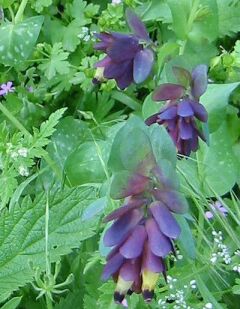
Cerinthe retorta – a tall plant with dark purple flowers and
spotted leaves makes a
marvelous self-seeding annual for the
garden and is to be seen making a show at Sparoza every spring.
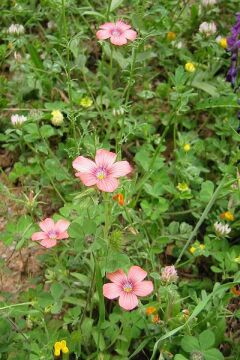
Linum pubescens – by the side of the road at our picnic
spot this linum
stood out with its amazing metallic salmon pink.
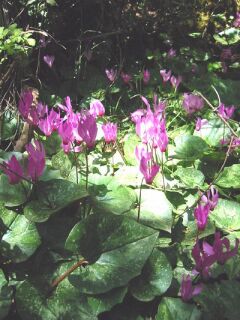
Cyclamen repandum subsp peloponnesiacum – endemic
to the Peloponnese yet so
common there that the soil
used in the local nursery often contains baby corms.
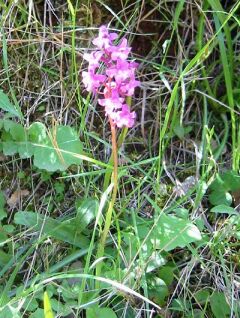
Orchis – unidentified Orchis with a slim stem picked out by the sun-light.
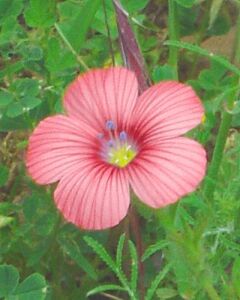
Under the shade of the road-side hedge, the brilliant
red
of this Linum pubescens
made us stop in our tracks.
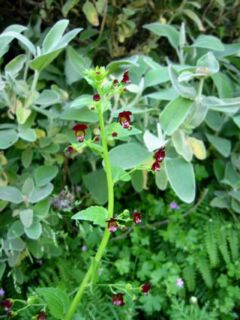
Scrophularia peregrina – the tiny dark flowers are a
surprise among the nettle-like leaves.
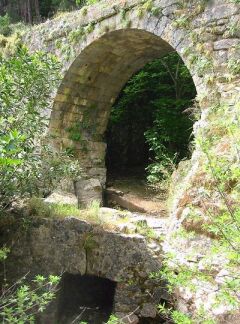
Hellenistic bridge dating from the time between the death
of Alexander the great and
the colonisation of greece by
the Romans (323 BC to 70 AD).
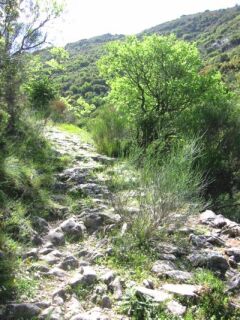
An old stone path, or kalderimi, leads down the Agios
Georgios
gorge in the Taygetos mountains.

Our photographer hugging a huge Platanus orientalis next to a spring.
|


